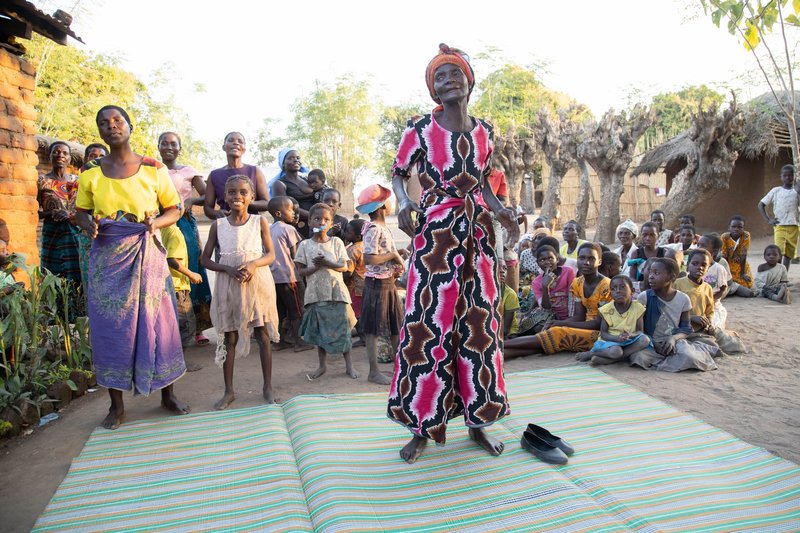
© Malumbo Simwaka / Uniting to Combat NTDs/ Sightsavers
Answers to frequently asked questions (FAQs)
What are neglected tropical diseases (NTDs)?
Neglected tropical diseases (NTDs) are a group of twenty-one different diseases and infections that can cause significant disfigurement, disability, and death. For more on each NTD, see our disease pages.
Who do they affect?
They affect around 1.65 billion people around the world and tend to thrive in warm climates and in rural, poverty-stricken areas where access to clean water and healthcare is limited.
How long have NTDs existed?
NTDs have burdened humanity since the beginning of recorded history. For example, descriptions of NTDs such as trachoma, guinea worm, and others are found in the Bible. Evidence of schistosomiasis infection has been found in Egyptian mummies, the presence of river blindness was documented in African art and folklore, and leprosy was recorded in ancient texts from China and India.
Why are NTDs considered to be neglected?
NTDs have earned their name for a reason – these diseases, the people, and the regions they afflict typically have been overlooked, receiving very little global attention and funding for research, prevention, and control efforts. Though one out of every five people worldwide are at risk of NTDs, many people are not aware of the existence of these debilitating diseases.
The term “neglected tropical diseases” emerged in the early 21st century as global health organizations and researchers sought to draw attention to the unique challenges posed by these diseases and advocate for increased efforts to control and eliminate them.
What causes NTDs?
NTDs can be transmitted by various microscopic parasites and bacteria that can spread through dirty water, soil, bites from insects like mosquitoes and sandflies, or close contact with other people – often through droplets or secretions through the nose, eyes, or mouth.
What is it like to have an NTD?
NTDs wreak havoc on peoples’ lives and can cause immense suffering, chronic disability, disfigurement, and death. Trachoma, for example, is an eye infection that causes painful scarring of the eyelids and blindness. Leprosy affects the nerves, resulting in muscle weakness, numbness, and deformities, particularly in the hands and feet. Visceral leishmaniasis affects internal organs like the spleen and liver, causing severe anemia, organ failure, and death. For a complete overview of all twenty-one NTDs and their symptoms, please visit the disease directory.
How else do NTDs impact affected communities?
NTDs not only compromise physical health, but also undermine emotional well-being, educational pursuits, and economic stability. Here’s how:
- Emotional impact: The emotional toll is profound, with affected individuals grappling with social stigma, distress, and limited participation in community life.
- Educational impact: Educational aspirations are curtailed as children face school absenteeism and learning disabilities, perpetuating cycles of limited opportunities.
- Economic impact: NTDs prevent people from working, increase healthcare spending for families and governments, and entrench affected communities in a cycle of poverty – costing affected countries billions of dollars every year.
What progress has been made fighting NTDs?
Despite limited funding, many countries have made significant progress controlling and treating NTDs. As of July 2024, 51 countries have eliminated at least one NTD, meaning that those diseases no longer pose a threat to people living in those countries. Meanwhile, researchers are developing new treatments and better tools to diagnose and prevent NTDs. Contributing to this success is a group of committed donors, including the pharmaceutical industry, which generously contributed over 15 billion treatments between 2012 and 2022. In 2022 alone, impressively around 820 million people received treatment for NTDs, the result of a monumental effort to reach people in need.
What are the targets for NTDs?
Disease-specific targets for 2030 and milestones for 2023 and 2025 were set for each of the 20 diseases and disease groups for one of the following:
(a) eradication, defined as permanent reduction to zero of the worldwide incidence of a specific pathogen, as a result of deliberate efforts, with no risk of reintroduction;
(b) elimination (interruption of transmission), defined as reduction to zero of the incidence of infection caused by a specific pathogen in a defined geographical area, with minimal risk of reintroduction, as a result of deliberate efforts; continued action to prevent re-establishment of transmission may be required;
(c) elimination as a public health problem, is a term related to both infection and disease, defined by achievement of measurable targets set by WHO in relation to a specific disease. When reached, continued action is required to maintain the targets and/or to advance interruption of transmission;
(d) control, defined as reduction of disease incidence, prevalence, morbidity and/or mortality to a locally acceptable level as a result of deliberate efforts; continued interventions are required to maintain the reduction.
What is needed to end NTDs?
Exciting times are ahead in the fight against NTDs. To succeed, we need more global leaders to commit to ending NTDs and pledge crucial funding. Investing in new research is also key, developing more tools that align with community needs. And NTD interventions must be integrated into existing primary healthcare packages for everyone in at-risk areas.
By working together, we can create a future where everyone, no matter where they live, can lead a healthy and happy life. Join the movement – let's make NTDs history!